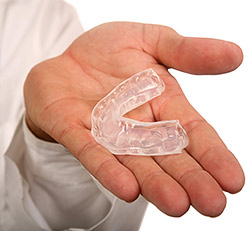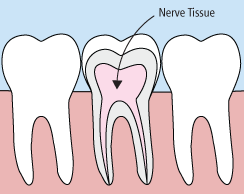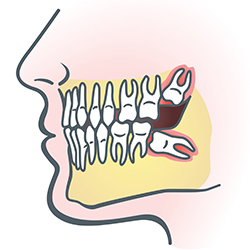Topics on this page

Regular Exams and Cleanings
Regular teeth cleanings are important - in fact, they're the foundation of a healthy smile for any child. By scheduling cleanings early and often, you’ll help your child build a strong foundation of dental health they’ll carry with them into adulthood.
Teeth cleanings are learning opportunities. At Big Sky Pediatric Dentistry, we’ll sit your child down and tell them exactly what we’re doing, how we’re doing it, and why it’s important. We’ll also show them how to floss, brush, and develop healthy habits that will last a lifetime.
We understand that some children are afraid of the dentist. Our staff are friendly, gentle professionals with specialized training in how to make your child feel safe and comfortable during their visit. Our top priority is setting your child up for a lifetime of great dental health, and parents are always welcome to accompany their child throughout the appointment.
During a teeth cleaning, we’ll also:
- Check for any problems that may not be seen or felt.
- Look for cavities or any other signs of tooth decay.
- Inspect the teeth and gums for gingivitis and signs of periodontal disease.
Schedule a regular cleaning with us today.
Bonding
 Bonding is a conservative way to repair slightly chipped, discolored, or crooked teeth. During dental bonding, a white filling is placed onto your child's tooth to improve its appearance. The filling “bonds” with the tooth, and because it comes in a variety of tooth-colored shades, it closely matches the appearance of your child's natural teeth.
Bonding is a conservative way to repair slightly chipped, discolored, or crooked teeth. During dental bonding, a white filling is placed onto your child's tooth to improve its appearance. The filling “bonds” with the tooth, and because it comes in a variety of tooth-colored shades, it closely matches the appearance of your child's natural teeth.
Tooth bonding can also be used for fillings instead of amalgam. Many patients prefer bonded fillings because the white color is much less noticeable than silver. Bonding fillings can be used on front or back teeth, depending on the location and extent of tooth decay.
Bonding is less expensive than other cosmetic treatments and can usually be completed in one visit to our office. However, bonding can stain and is easier to break than other cosmetic treatments, such as porcelain veneers. If it does break or chip, tell your doctor. The bonding can generally be easily patched or repaired in one visit.
Crowns
 Crowns are a restorative procedure used to improve a tooth’s shape or to strengthen a tooth. Crowns are most often used for teeth that are broken, worn, or have portions destroyed by tooth decay.
Crowns are a restorative procedure used to improve a tooth’s shape or to strengthen a tooth. Crowns are most often used for teeth that are broken, worn, or have portions destroyed by tooth decay.
A crown is a “cap” cemented onto an existing tooth that usually covers the portion of the tooth above the gum line. In effect, the crown becomes the tooth’s new outer surface. Crowns can be made of porcelain, metal, or both. Porcelain crowns are most often preferred because they mimic the translucency of natural teeth and are very strong.
Crowns or onlays (partial crowns) are needed when there is insufficient tooth strength remaining to hold a filling. Unlike fillings, which apply the restorative material directly into the mouth, a crown is fabricated away from the mouth. A crown is created in a lab from your child's unique tooth impression, which allows a dental laboratory technician to examine all aspects of your child's bite and jaw movements. The crown is then sculpted just for your child so that his or her bite and jaw movements function normally once the crown is placed.
Tooth Removal
 When the tooth fairy isn’t ample enough incentive, and the thought of removing your child’s tooth frankly freaks you out, we can step in and help get the job done. (Don’t worry, we’ll let you keep the tooth.)
When the tooth fairy isn’t ample enough incentive, and the thought of removing your child’s tooth frankly freaks you out, we can step in and help get the job done. (Don’t worry, we’ll let you keep the tooth.)
Sometimes, it might even be necessary to bring us into the equation. If a baby tooth has misshapen roots that prevent it from falling out as it should, it’s not a bad idea to have it clinically removed in order to make room for the permanent one underneath it.
As you can expect, this procedure is typically a quick one. We’ll use our special tools to remove the problem tooth painlessly, and you’ll be back home preparing the piggy bank in no time.
Fillings
 It happens to the best of us: One too many late-October sweets, and your child’s got a cavity.
It happens to the best of us: One too many late-October sweets, and your child’s got a cavity.
Cavities are decayed areas in the hard surface of a tooth that develop into tiny openings or holes. They’re usually caused by sugary, sticky foods and beverages. To treat them, we’ll remove the decayed portion of the tooth, then fill the area with a ceramic or plastic compound that mimics the appearance of natural teeth.
Fluoride
 Fluoride is effective in preventing cavities and tooth decay and in preventing plaque from building up and hardening on the tooth’s surface. A fluoride treatment in a dentist’s office takes just a few minutes. After the treatment, your child may be asked not to rinse, eat, or drink for at least 30 minutes in order to allow the teeth to absorb the fluoride. Depending on your child’s oral health or the doctor’s recommendation, a fluoride treatment may be required every three, six, or 12 months.
Fluoride is effective in preventing cavities and tooth decay and in preventing plaque from building up and hardening on the tooth’s surface. A fluoride treatment in a dentist’s office takes just a few minutes. After the treatment, your child may be asked not to rinse, eat, or drink for at least 30 minutes in order to allow the teeth to absorb the fluoride. Depending on your child’s oral health or the doctor’s recommendation, a fluoride treatment may be required every three, six, or 12 months.
Mouthguards
 Whether your child wears braces or not, protecting his or her smile while playing sports is essential. Mouthguards help protect the teeth and gums from injury. If your child participates in any kind of full-contact sport, the American Dental Association recommends that he or she wear a mouthguard. Choosing the right mouthguard is essential. There are three basic types of mouthguards: the pre-made mouthguard, the “boil-and-bite” fitted mouthguard, and a custom-made mouthguard from the dentist. When you choose a mouthguard, be sure to pick one that is tear-resistant, comfortable and well-fitted for your mouth, easy to keep clean, and does not prevent your child from breathing properly. Your dentist can show your child how to wear a mouthguard properly and how to choose the right mouthguard to protect his or her smile.
Whether your child wears braces or not, protecting his or her smile while playing sports is essential. Mouthguards help protect the teeth and gums from injury. If your child participates in any kind of full-contact sport, the American Dental Association recommends that he or she wear a mouthguard. Choosing the right mouthguard is essential. There are three basic types of mouthguards: the pre-made mouthguard, the “boil-and-bite” fitted mouthguard, and a custom-made mouthguard from the dentist. When you choose a mouthguard, be sure to pick one that is tear-resistant, comfortable and well-fitted for your mouth, easy to keep clean, and does not prevent your child from breathing properly. Your dentist can show your child how to wear a mouthguard properly and how to choose the right mouthguard to protect his or her smile.
Nightguards
 If your child often wakes up with jaw pain, earaches, or headaches, or if you see your child clenching or grinding his or her teeth, your child may have a common condition called “bruxism”. Many people do not even know that they grind their teeth, as it often occurs when one is sleeping. If not corrected, bruxism can lead to broken teeth, cracked teeth, or even tooth loss.
If your child often wakes up with jaw pain, earaches, or headaches, or if you see your child clenching or grinding his or her teeth, your child may have a common condition called “bruxism”. Many people do not even know that they grind their teeth, as it often occurs when one is sleeping. If not corrected, bruxism can lead to broken teeth, cracked teeth, or even tooth loss.
There is an easy, non-invasive treatment for bruxism: nightguards. Nightguards are an easy way to prevent the wear and damage that teeth-grinding causes over time. Custom-made by a dentist from soft material to fit the teeth, a nightguard is inserted over your child’s top or bottom arch and prevents contact with the opposing teeth.
Pulp Therapy (Root Canals)
 If your child needs pulp therapy, it’s not the end of the world. With today’s technology, the whole procedure is relatively painless and can be completed in only a few visits to our office.
If your child needs pulp therapy, it’s not the end of the world. With today’s technology, the whole procedure is relatively painless and can be completed in only a few visits to our office.
This operation deals with the inner, central core of the tooth, called the pulp. The pulp contains nerves, blood vessels, connective tissue and reparative cells, and occasionally, cavities and traumatic injury can damage it. If left untreated, this can kill the tooth. In Pediatric Dentistry, we use a method called pulp therapy (also known as a root canal or a nerve treatment) to remedy damaged pulp and save the affected tooth.
Pulp therapy is further broken down into two different procedures: pulpotomies and pulpectomies.
- A pulpotomy removes the diseased pulp tissue within the crown portion of the tooth. Next, an agent is placed to prevent bacterial growth and to calm the remaining nerve tissue. This is followed by a final restoration (usually a stainless steel crown).
- A pulpectomy is required when the entire pulp is involved (into the root canal(s) of the tooth). During this treatment, the diseased pulp tissue is completely removed from both the crown and root. The canals are cleansed, disinfected and, in the case of primary teeth, filled with a resorbable material. Then, a final restoration is placed. A permanent tooth would be filled with a non-resorbing material.
Sealants
 Children aren’t known for being the best brushers. It can be near impossible to get them to give their teeth the attention they deserve, especially the hard-to-reach ones in the back. For your own peace of mind, we might recommend a sealant to give your child’s teeth extra protection against decay and help prevent cavities.
Children aren’t known for being the best brushers. It can be near impossible to get them to give their teeth the attention they deserve, especially the hard-to-reach ones in the back. For your own peace of mind, we might recommend a sealant to give your child’s teeth extra protection against decay and help prevent cavities.
Sealants are a protective coating that goes on the chewing surfaces of the back teeth (premolars and molars), where four out of five cavities in children are found. The sealant acts as a barrier to food, plaque and acid, thus protecting the decay-prone areas of the teeth.
Veneers
 Your child no longer needs to hide his or her smile because of gaps, chips, stains, or misshapen teeth. With veneers, you can easily correct your child’s teeth’s imperfections to help him or her have a more confident, beautiful smile. Veneers are natural in appearance, and they are a perfect option for patients wanting to make minor adjustments to the look and feel of their smile.
Your child no longer needs to hide his or her smile because of gaps, chips, stains, or misshapen teeth. With veneers, you can easily correct your child’s teeth’s imperfections to help him or her have a more confident, beautiful smile. Veneers are natural in appearance, and they are a perfect option for patients wanting to make minor adjustments to the look and feel of their smile.
Veneers are thin, custom-made shells made from tooth-colored materials (such as porcelain), and they are designed to cover the front side of your child's teeth. To prepare for veneers, the doctor will create a unique model of your child’s teeth. This model is sent to the dental technician to create the veneers. Before placing the new veneer, the doctor may need to conservatively prepare the tooth to achieve the desired aesthetic result.
When placed, you’ll be pleased to see that veneers look like your child's natural teeth. While veneers are stain resistant, the doctor may recommend that your child avoid juices, tea, and other staining food and drinks to maintain the beauty of your child’s new smile.
Wisdom Teeth
 Wisdom teeth are types of molars found in the very back of your child’s mouth. These teeth usually appear in late teens or early 20s, but they may become impacted (fail to erupt) due to lack of room in the jaw or angle of entry. When a wisdom tooth is impacted, it may need to be removed. If it is not removed, your child may develop gum tenderness, swelling, or even severe pain. Impacted wisdom teeth that are partially or fully erupted tend to be quite difficult to clean and are susceptible to tooth decay, recurring infections, and even gum disease.
Wisdom teeth are types of molars found in the very back of your child’s mouth. These teeth usually appear in late teens or early 20s, but they may become impacted (fail to erupt) due to lack of room in the jaw or angle of entry. When a wisdom tooth is impacted, it may need to be removed. If it is not removed, your child may develop gum tenderness, swelling, or even severe pain. Impacted wisdom teeth that are partially or fully erupted tend to be quite difficult to clean and are susceptible to tooth decay, recurring infections, and even gum disease.
Wisdom teeth are typically removed in the late teens or early twenties because there is a greater chance that the tooth’s roots have not fully formed and the bone surrounding the teeth is less dense. These two factors can make extraction easier as well as shorten the recovery time.
In order to remove a wisdom tooth, your child’s dentist first needs to numb the area around the tooth with a local anesthetic. Since the impacted tooth may still be under the gums and embedded in your jaw bone, the dentist will need to remove a portion of the covering bone to extract the tooth. In order to minimize the amount of bone that is removed with the tooth, the dentist will often “section” the wisdom tooth so that each piece can be removed through a small opening in the bone. Once your child’s wisdom teeth have been extracted, the healing process begins. Depending on the degree of difficulty related to the extraction, healing time varies. Your child's dentist will share with you what to expect and provide instructions for a comfortable, efficient healing process.
Dental Radiographs (X-Rays)
Radiographs (X-Rays) are a vital and necessary part of your child's dental diagnostic process. Without them, certain dental conditions can and will be missed.
Radiographs detect much more than cavities. We also need them to survey erupting teeth, diagnose bone diseases, evaluate the results of an injury, and plan orthodontic treatment. Radiographs allow us to diagnose and treat health conditions that simply can’t be detected during a clinical examination. If we can find and treat dental problems early, it’ll be more comfortable for your child and more affordable for you.
The American Academy of Pediatric Dentistry recommends radiographs and examinations every six months for children with a high risk of tooth decay. On average, most pediatric dentists request radiographs approximately once a year. We recommend a complete set of X-Rays once every 3 years, either panoramic and bitewings or periapicals and bitewings.
Pediatric dentists are particularly careful to minimize the exposure of their patients to radiation. With contemporary safeguards, the amount of radiation received in a dental X-ray examination is extremely small. The risk is negligible. In fact, the dental radiographs represent a far smaller risk than an undetected and untreated dental problem. Lead body aprons and shields will protect your child. Today's equipment filters out unnecessary X-Rays and restricts the X-Ray beam to the area of interest. High-speed film and proper shielding assure that your child receives only a minimal amount of radiation exposure.

Follow Us